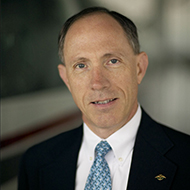The C-172 pilot apologized and continued with his landing. At our airport, a noise abatement procedure encourages flights to climb to pattern altitude before turning. We had just turned onto crosswind when the transient turned his crosswind leg well inside of us. He finished that touch and go and called crosswind again at about 400 feet. The instructor in the aircraft that had been cut off before had had enough. He strongly advised the transient of the noise abatement profile. The C-172 asked forgiveness again and, figuring that this wasn't a very friendly place, departed for home. Strike three.
What can be learned from this experience? It's obvious that the C-172 pilot had not prepared well for his arrival. Sectional charts now show which runways at nontowered airports have right traffic. The FAA's Airport/Facility Directory and AOPA's Airport Directory both describe the proper pattern. Flying a mirror-image pattern can lead to a head-on situation on base leg. It is also not where many pilots would think to look for traffic.
At our airport, a segmented circle also was available for the transient's perusal if he had taken time to fly over the airport to check it out. What's more, the unicom was answering calls. Even a quick question to other aircraft in the pattern would have clarified the point. In busy places, just listening on the common traffic advisory frequency (CTAF) or unicom will generally yield the information you need without cluttering the airwaves. There are many ways to determine the right direction for your pattern.
Not seeing another aircraft on base is a common occurrence. That's just one more reason that it's better not to hurry the pattern. Instead, enter the downwind and see where the other players are. Time and communication are of the essence here, along with a good scan.
Noise abatement procedures are a little tougher to convey easily. They are unique to each airport and not as easily disseminated. Frequently the procedure is posted in the runup area. This is a good place for departures, but not for pilots shooting touch and goes. Common-sense practice is to fly quietly, reduce rpm as soon as possible, and avoid overflight of residential areas.
I took several lessons from this experience. First, every instructor should take great pains with students and on flight reviews to ingrain proper pattern procedure. Flexibility, common sense, and courtesy work well along with a touch of patience. The regulations and advisory material give us some leeway on how to resolve nontowered traffic situations. Differences of opinion should be worked out on the ground. When providing guidance to another pilot by radio for safety purposes, be brief and polite. Don't assume that the pilot is deliberately making your life difficult. Ninety-nine percent of transgressions are inadvertent. Assume that the other pilot is trying to do the right thing and offer some guidance. You never know when you or someone you've taught might need some friendly advice instead of a browbeating.



